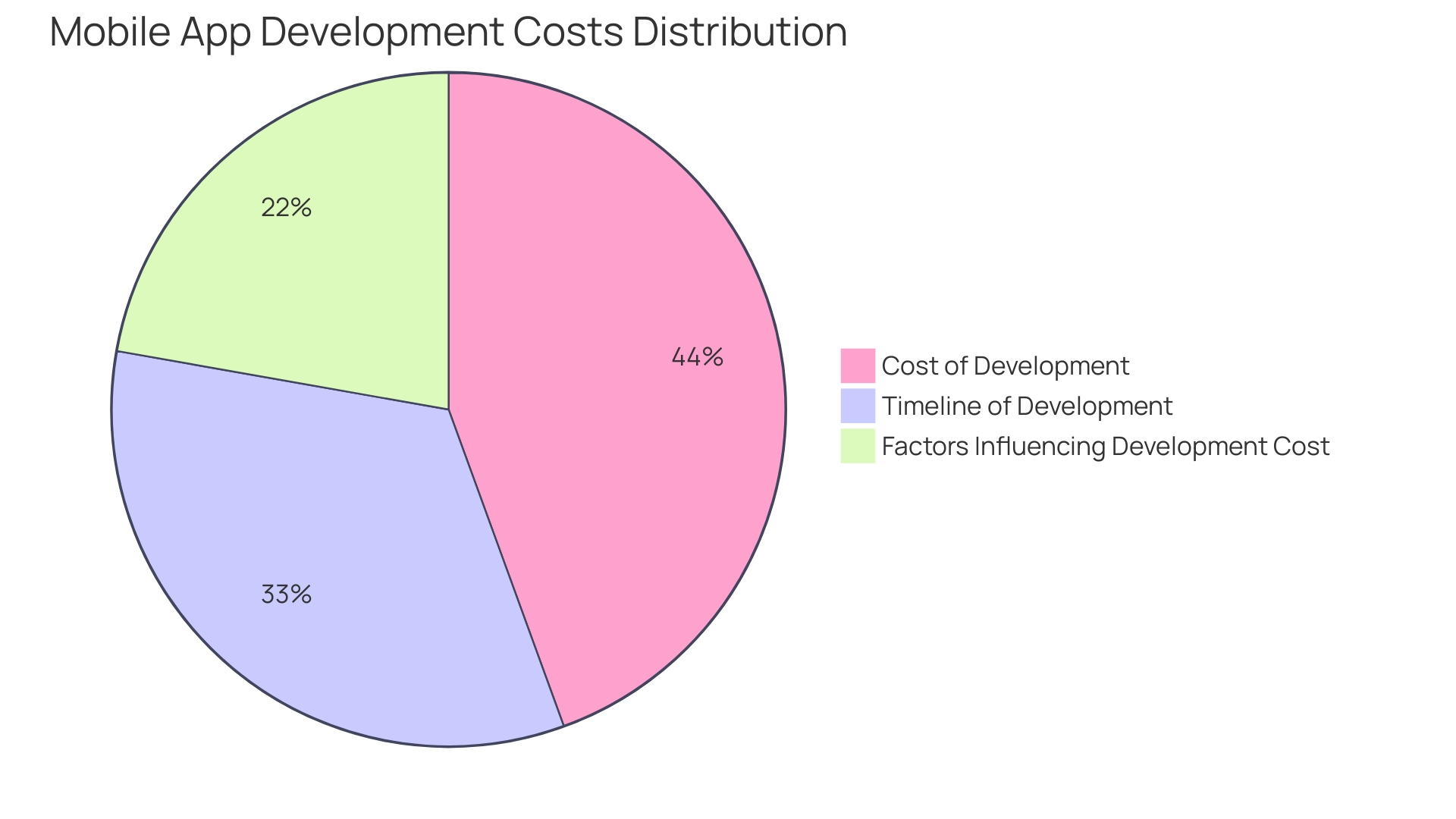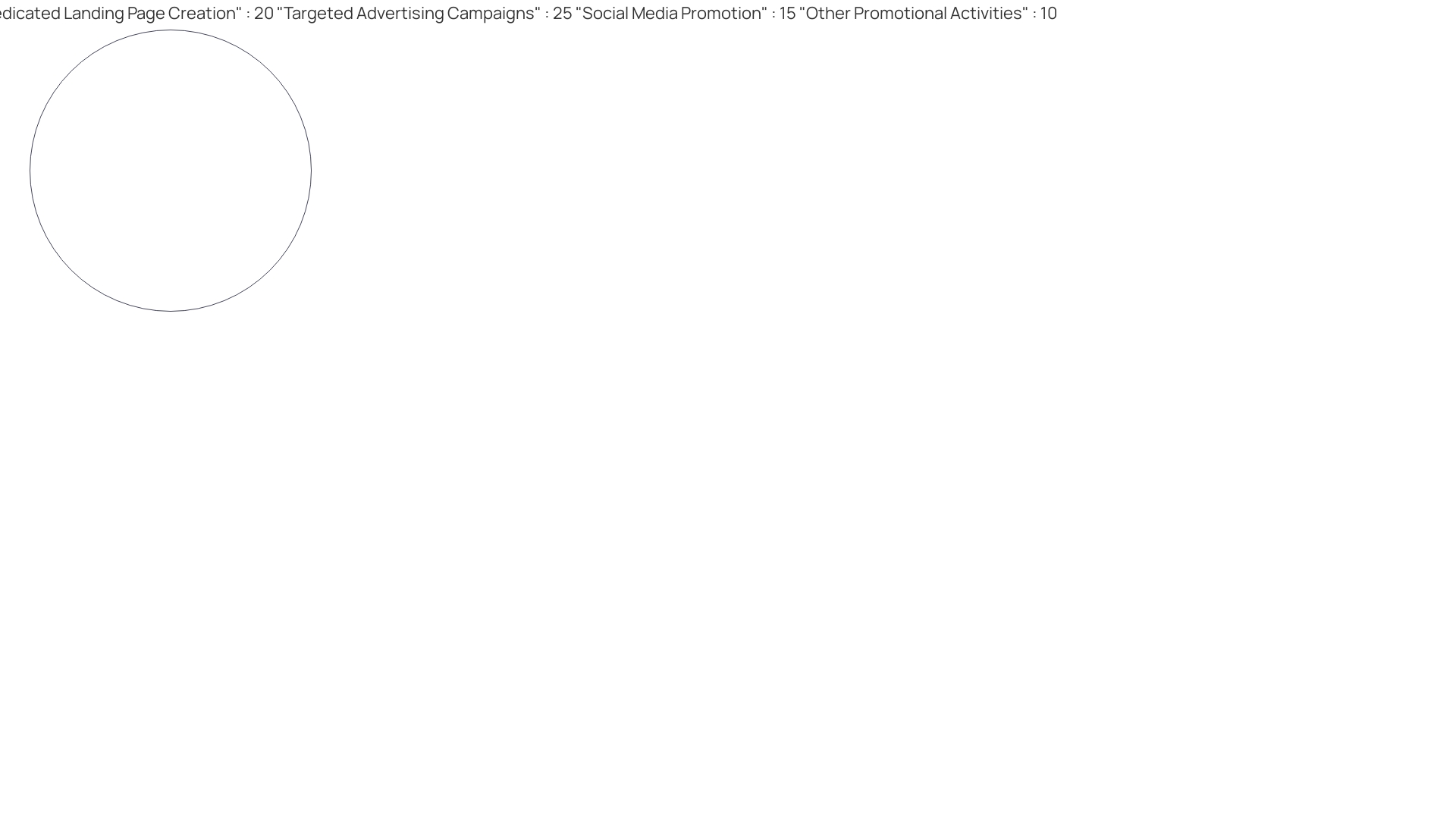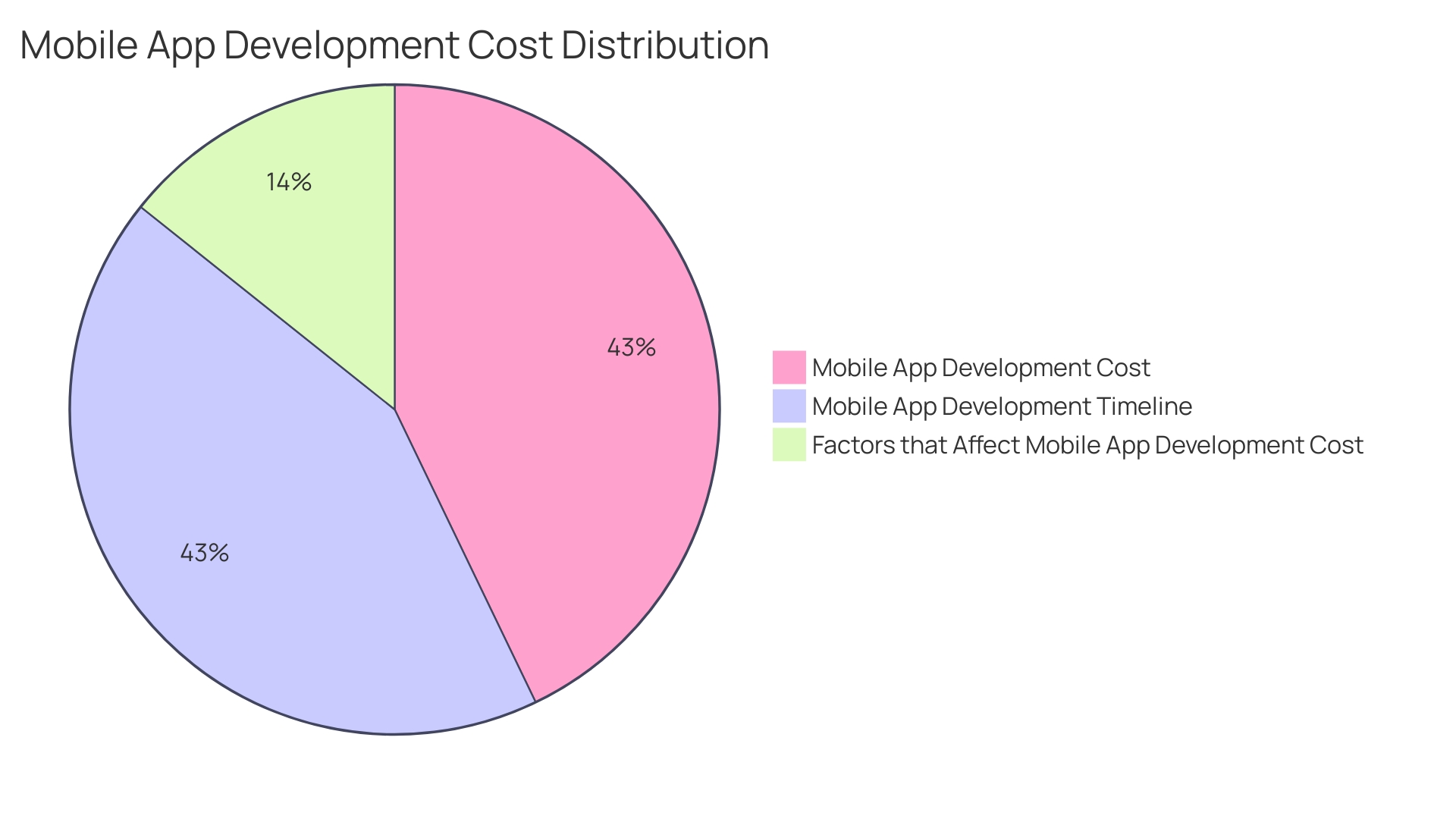Introduction
The article explores the factors that influence the cost of developing augmented reality (AR) mobile apps. From the complexity of app features and the proficiency of the development team to the choice of platforms and tools used, each aspect plays a crucial role in determining the investment required.
The article also delves into the significance of design and content creation, testing and debugging, as well as marketing and promotion in shaping the cost structure of AR app development. Through case studies and examples, readers will gain valuable insights into the multifaceted nature of app development costs and the strategic considerations needed to navigate this growing industry.
Development Time and Complexity
The intricacy of app features and the proficiency of the development team are pivotal factors impacting the investment in AR mobile app development. For instance, Swiss telecom company Swisscom harnessed the power of AR for promoting its 'blue' services, necessitating cutting-edge functionalities to captivate the tech-savvy under-40 demographic.
This underscores not only the necessity for sophistication in app design but also implies a higher budget to meet such advanced specifications. Moreover, industry insights reveal that the threshold for mobile app development costs is quite broad, starting as low as $10,000 and potentially exceeding $350,000.
A myriad of factors, such as project complexity and expert talent, contribute to the fiscal scope. Indeed, detailed project scoping, akin to that in generative AI and Data Science ventures, is critical in shaping both the user experience and the budgetary framework. On the data front, it's essential to recognize the marked disparity in user acquisition costs between different operating systems, with Android consistently outpacing iOS in affordability, particularly in regions such as Latin America, Europe, and Asia. A comprehensive grasp of these dynamics equips businesses to navigate the fiscal demands of mobile app development effectively.

Developer's Hourly Charge
When evaluating the expenses associated with augmented reality (AR) app development, the billing rates of your development team form a crucial piece of the puzzle. These rates are not uniform, diverging based on a trifecta of variables: expertise, prestige, and the team's physical location in the world. The true value lies not just in the numeric figure of their hourly charge but in the caliber of their work and the depth of value they add to the project.
Reflect on the significance of AR in mobile app development and its value proposition for marketing and user engagement across a spectrum of industries—from e-commerce to gaming. Moreover, since operating systems (Oss), such as iOS and Android, can significantly impact user acquisition costs, they indirectly influence development priorities and, by extension, cost structures. Ultimately, this underscores that choosing a development team is a balancing act of cost, quality, and end-user benefits, ensuring the end product resonates with the intended audience and justifies the investment.

Platforms and Tools Used
Selecting the appropriate platforms and technological tools is fundamental in AR app development, influencing not only functionality but also cost. In-depth project scoping, as seen in any Data Science endeavor, is critical for understanding end-user needs and determining the ideal setup for a tailored AR experience.
As Tipteh found, choosing a solution that offered detailed visualizations of 3D designs was crucial to avoid miscommunications and additional costs. This principle holds true in AR development where precision and a complete understanding of the user environment can make or break a project.
Furthermore, awareness of the target demographic's preferences is paramount. For instance, Swisscom's targeted promotion of its 'blue' service line to the Swiss market required an understanding of that niche.
Likewise, app user acquisition costs may vary by the chosen operating system, with stats showing that Android users are generally less costly to acquire than iOS users, particularly in regions like Latin America, Europe, and Asia. This illustrates how strategic choices regarding platform can significantly impact both reach and budget. Lastly, it’s essential to grasp the economics of platforms, as indicated by Bill Gates' definition. For an AR app, the platform chosen should create more value for users and developers than it captures, ensuring a sustainable and growth-oriented ecosystem. Thus, opting for the right platforms and tools in AR app development is not just a technical decision, but a strategic one that affects the economic value generated and the overall investment required.
Design and Content Creation
Augmented Reality (AR) experiences offer immersive and interactive dimensions that can dramatically transform the assimilation and processing of information, bridging the gap between digital content and the physical world. Crafting such experiences, however, requires meticulous design efforts to achieve this seamless integration.
From the outset, it's essential to consider the user's journey within the AR space and construct elements that resonate with real-world interactions. Simplicity and iterative usability testing are vital principles, as overdetailed or overly complex designs can impede user engagement.
Quality design and content creation are pivotal, with every aspect, from the intricacy of 3D models and animations to the fusion of audiovisual elements, contributing to the uniqueness of the AR application. Swiss telecommunications giant Swisscom's 'Blue Space' campaign is a prime example, where they effectively targeted the under-40 demographic by employing AR to enhance their brand identity and service offerings.
The cost implications of crafting such detailed AR content are non-negligible, particularly when evaluating the frequency of use and the specific context in which the AR application will operate. As echoed in Artillery Intelligence's research, the early stages of project scoping, wherein end-user requirements are distilled, are essential to guide the development. This phase determines the adjustments needed for the use case's form and content, ultimately shaping the application and its cost structure. A carefully strategized approach to AR design and deployment not only captivates users but also ensures the economic feasibility for creators.
Testing and Debugging
As mobile apps seamlessly integrate into the daily fabric of our lives, the stakes are high in developing an application that not only meets but exceeds user expectations. With the mobile app industry projected to bring in over $613 billion by 2025, ensuring top-notch functionality, stability, and user experience has never been more critical. The investment into the testing and debugging phase is, without question, non-negotiable and significantly influences the overall cost of AR app development.
The delicacy of this stage lies in the intricateness of the app and the spectrum of devices and operating systems it must flawlessly perform on. It's a balancing act between intricacy and coverage, where each additional device and OS adds layers to the testing matrix. The key takeaway is clear: to navigate this crucial phase proficiently, ample time and resources are imperative for the honing of a superior-quality AR application, capable of standing out in a market that is becoming increasingly lucrative and competitive.
Marketing and Promotion
Crafting an effective promotional plan is integral to the success of an Augmented Reality (AR) application. A strategic approach to marketing that includes developing a specialized strategy, establishing a dedicated landing page, and executing targeted advertising campaigns is paramount.
Social media, a powerful tool for reaching a broad audience, is also key in enhancing the app's visibility. Recognizing the impact of these promotional efforts, one should not overlook the necessity of setting aside a budget to amplify the outreach of the AR app.
The case of Swiss telecom giant Swisscom, which implemented a comprehensive campaign for its 'blue' consumer service line targeting the lucrative under-40 demographic, underscores the importance of astute marketing investment for penetrating a specific market and strengthening brand presence. Moreover, the disparity in user acquisition costs between operating systems — with Android users generally costing less to acquire due to their higher global volume — highlights the need for nuanced budget planning. Ultimately, a nuanced analytical approach to customer acquisition, informed by data and current market dynamics, solidifies the foundation for an AR app's successful entry and growth in the competitive landscape.

Calculating AR App Development Cost
Developing an augmented reality (AR) app involves a multifaceted approach to budgeting, and a discerning director of e-commerce knows it's key to attend to each cost-driving component diligently. Starting with an appraisal of the app's design complexity and anticipated development timeframe, you must integrate the expertise costs, paying heed to the hourly rate of seasoned developers.
Platform choice and tool selection inevitably influence your budget, as well as creative inputs that include design finesse and content richness. Thorough testing and debugging are non-negotiable to avoid costly post-launch malfunctions, as noted in Tipteh's pursuit of flawless machine design visualization for efficient collaboration and error minimization.
Furthermore, as showcased by Swisscom’s blue line promotion, strategic investment in marketing can potentiate visibility and brand resonance, particularly in your target demographics. Statista’s projection of over $613 billion revenue from mobile app downloads by 2025 underscores the lucrative potential of investing in AR app development, provided the costs are precisely managed. Keeping in mind that Android user acquisition often carries a lower financial outlay, particularly in technologically burgeoning regions such as Latin America, Europe, and Asia, a nifty director should weigh these operating system considerations deeply. Your financial planning should encapsulate these specifications to navigate the digital tech landscape confidently, charting a cost-effective course for your AR app venture.
Case Studies and Examples
Delving into the world of AR app creation, the cost considerations are as multifaceted as the apps themselves. A comprehensive analysis of mobile app development indicates that expenditures can range from $10,000 to a soaring $3,50,000 or more. Factors such as the complexity of the app, the technology used, and even the chosen operating system contribute significantly to this variance.
When considering the operating systems, analytics reveal a consistent trend: acquiring users for Android apps costs considerably less than for those on iOS, a reflection of the Android platform's broader user base globally, particularly in regions such as Latin America, Europe, and Asia. Real-world examples exemplify these variables in action. Tipteh, a company specializing in industrial automation, exemplifies the importance of utilizing advanced tools to envision machine designs in 3D, streamlining their process and avoiding superfluous expenses.
Furthermore, companies like Swiss telecom giant Swisscom highlight strategic promotional efforts, like their 'blue' consumer services, to enhance brand visibility and cater to specific demographics, in this case, the under-40s in Switzerland. Additionally, the frequency of app usage and the measurement metrics for cost analysis emerge as strong cost determinants. These insights, alongside compelling case studies and the revenue projections that forecast mobile app downloads to generate over $613 billion by 2025, serve as crucial guideposts for businesses primed to invest in mobile app development, underlining the myriad of elements that amalgamate to form the overall cost.

Conclusion
In conclusion, developing augmented reality (AR) mobile apps involves various factors that influence the cost. These include the complexity of app features, the proficiency of the development team, platform choice, design and content creation, testing and debugging, and marketing and promotion.
The complexity of app features and the expertise of the development team impact the investment required. Choosing the right operating system can also affect user acquisition costs, with Android generally being more cost-effective in certain regions.
Selecting the appropriate platforms and tools is crucial for functionality and cost. Deep project scoping and understanding the target demographic's preferences are essential considerations.
Design and content creation play a pivotal role in crafting immersive AR experiences. Simplicity, iterative usability testing, and attention to the user's journey are crucial aspects to consider.
Testing and debugging are non-negotiable and significantly impact the overall cost. Ensuring top-notch functionality, stability, and user experience requires adequate time and resources.
Crafting an effective promotional plan is integral. Developing a specialized strategy, establishing a dedicated landing page, and executing targeted advertising campaigns are key elements. Marketing investment is necessary to penetrate specific markets and enhance brand presence. When calculating the cost of AR development, it is important to consider various components, such as design complexity, development time frame, expertise costs, platform choice, creative inputs, testing and debugging, and marketing. Navigating the multifaceted nature of AR app development costs requires a strategic approach. Considering these factors and making informed decisions at each stage of the process will lead to a successful and cost-effective AR app venture.





